Lit with a Beauty Dish
If I could have only one light modifier it would be a 22″ white Beauty Dish. If I could have two – it would be a Beauty Dish with a grid. Nothing quite replicates the look.
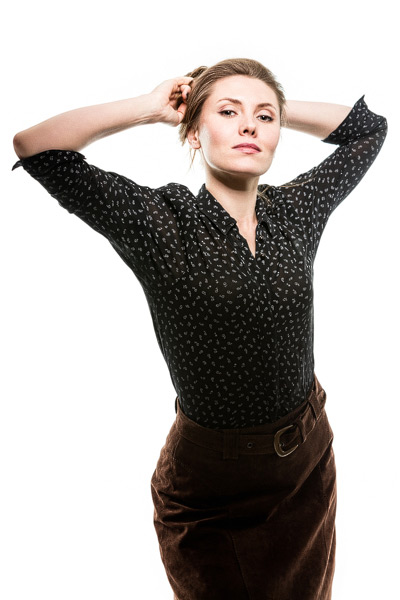
1/160 s at f/5.6, ISO 160, 100 mm
The key (main light) for these shots was a 600 Ws strobe with the Beauty Dish and a honeycomb grid, placed on a boom frontally and overhead, approximately 4 feet away from the model. There is something magical about a Beauty Dish – it gives light which is not really soft, not really hard, yet focused, edgy and “three-dimensional”. It is a distinct look, different from what can be achieved with a softbox or with an umbrella.
The grid tightened the beam of light and added some contrast and drama to the look. I also used a small white reflector, camera left, for just a touch of fill light. There is a big light falloff from the Beauty Dish but I actually like it in these shots.
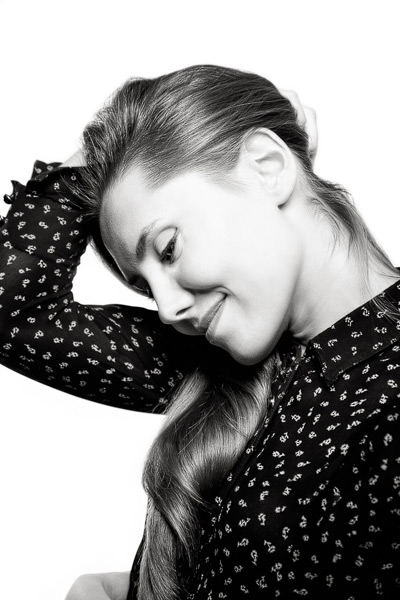
1/160 s at f/5.6, ISO 200, 105 mm
A white seamless paper background helped me draw attention to the model. To eliminate any texture and shades of gray from the background I illuminated it evenly with two hot shoe flashes set to 24 mm zoom and sitting in two 43″ silver umbrellas (I chose small flashes mainly for portability, though more powerful lights would let me shoot at a higher aperture / lower ISO). All the flashes were set in manual mode and fired with PocketWizard radio triggers.
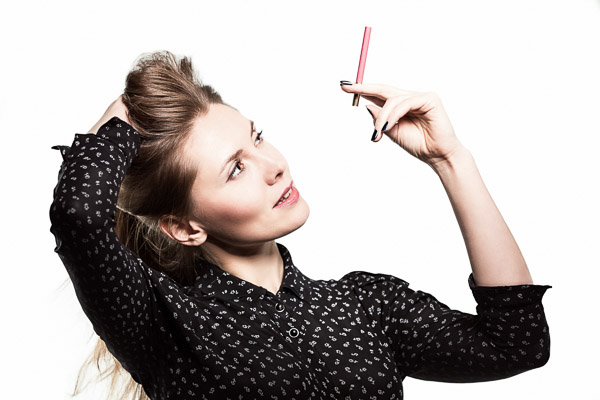
1/160 s, f/5.0 ISO 250, 120 mm
My camera settings killed the ambient leaving me only with the light which I controlled. I adjusted the background lights until I was seeing a spike in the whites region of the histogram on my camera, and the key light simply until I was happy with the results – maybe a third of a stop more than for a typical portrait.
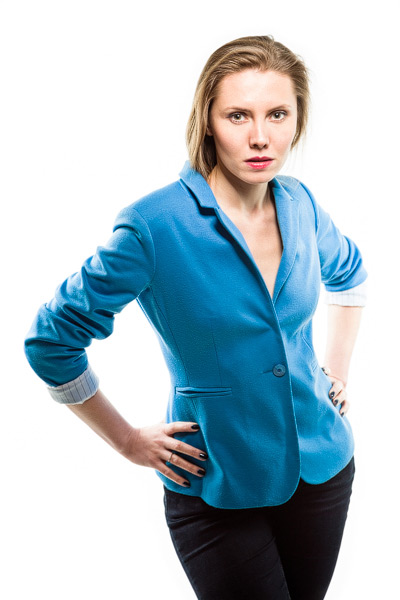
1/160 s at f/5.6, ISO 160, 95 mm
In case you are wondering how much post-processing I did, below is the first shot right from the camera (a preview of a completely unedited RAW image after importing to Lightroom).
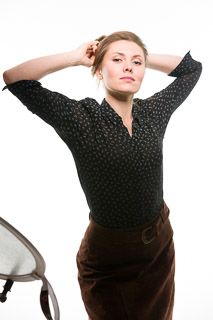
Unprocessed image
Unlike this RAW preview from Lightroom, a JPEG preview at the back of my camera was already contrasty and sharpened by the ?Standard? Picture Style (in-camera Styles do not affect RAW images and only get baked into JPEGs). But I prefer to take things in my hands and adjust the settings to taste.
So I pushed the whites a bit until the background was pure white, tweaked the tonal curve for a better contrast, added a pinch of clarity and sharpening, and slightly desaturated the skin. Oh, and I removed that reflector.
The Beauty Dish with a grid and the white seamless background were my primary tools for achieving this look. Previously I used a Beauty Dish in a different setup for overpowering the sun. Be sure to check out that post!
Lit with a Beauty DishFiled under photo shoots, photography, tutorial, Tagged back light, Beauty Dish, flash, grid, key light, lighting, photo session, PocketWizard, strobe, technique, umbrella
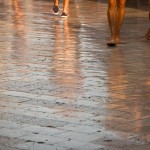
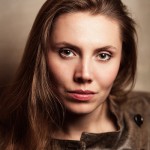
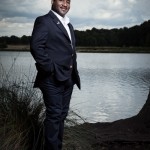
Comments
Nikolay
So if i understand correctly if you want to fire 4 speedlights you will have to buy 4 receivers using the trigger to fire them all? Why can't you use say Canon 580EX II as the master and then link the other speedlights as slaves? and only by 1 receiver and connect to your master speedlight?
Tom
Nikolay, I used 3 lights, each with a radio receiver, and one transmitter on the camera. Radio triggers add to the cost but since I already own them, I prefer to use them. They are more reliable and easier than optical methods, especially when slaves are hidden in lighting mods or when working outdoors.
What do you think?